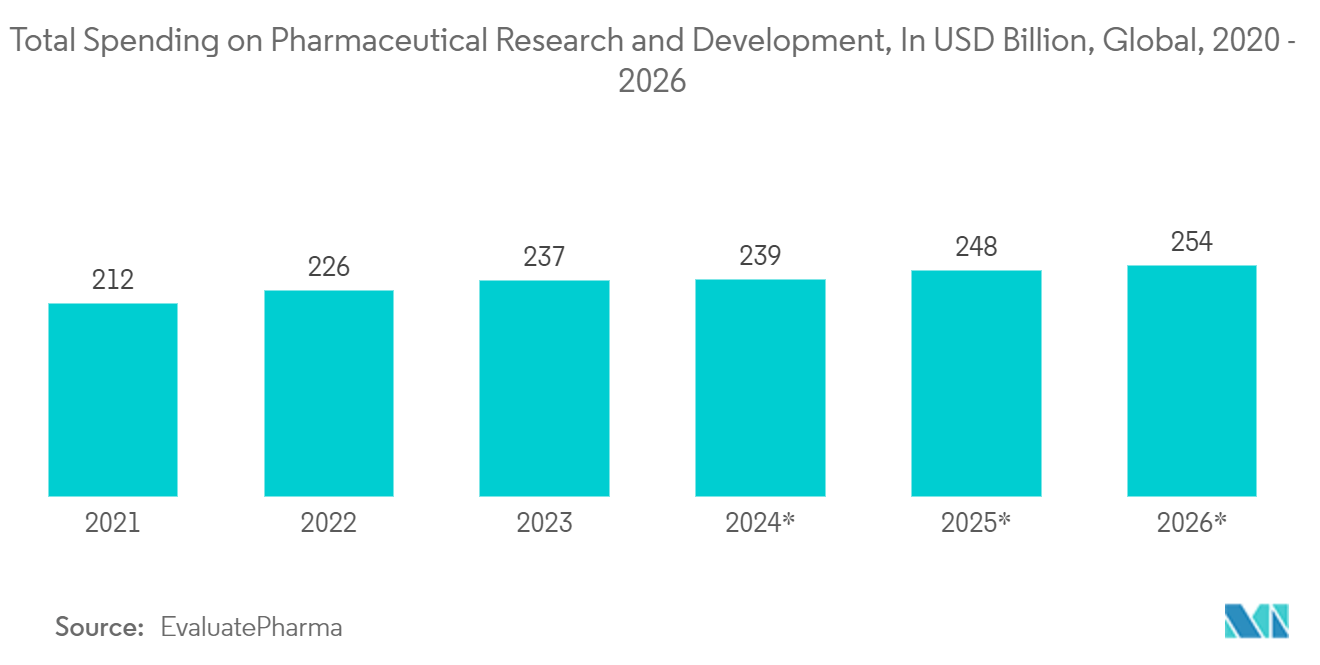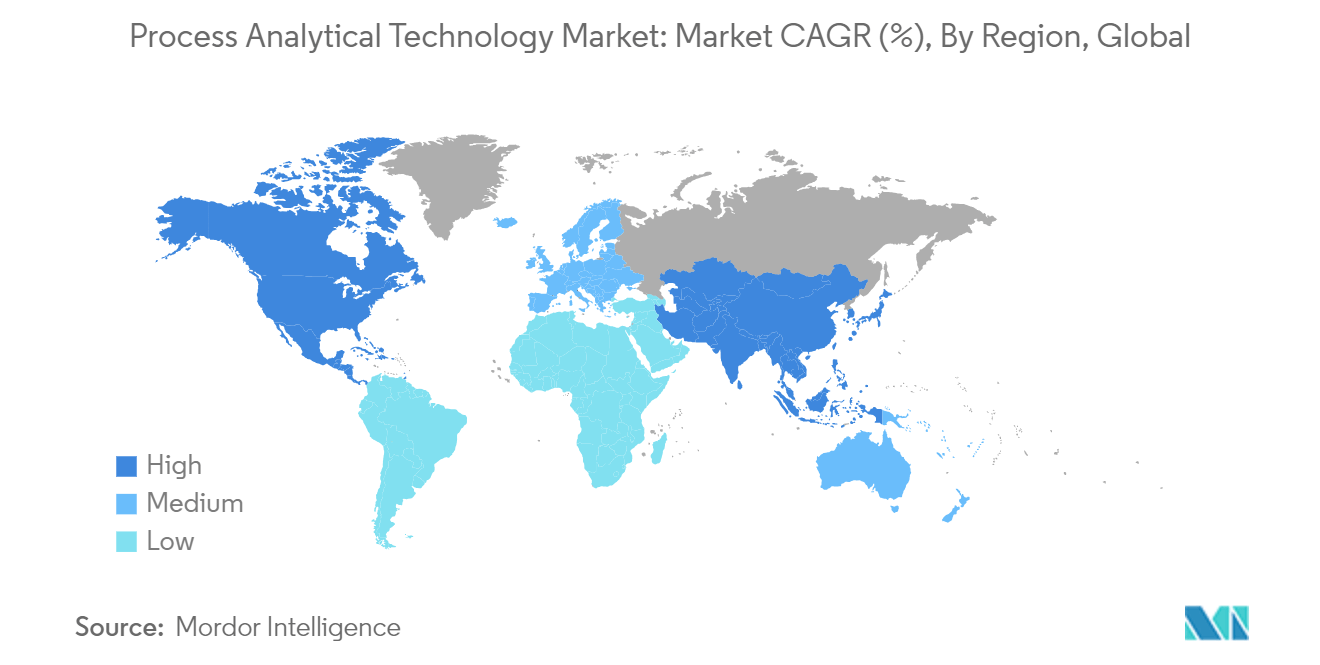Market Trends of Process Analytical Instrumentation Industry
Pharmaceutical and Biotechnology Segment Observing Significant Market Growth
- The biopharmaceutical manufacturing industry relies on analytical testing to help improve productivity, optimize and monitor processes, characterize biologics and biosimilars, and provide real-time product quality control. All these are essential in creating a more streamlined process within biomanufacturing, resulting in lower costs, more consistent product quality, and more efficient manufacturing across the board.
- The pharmaceutical industry has always searched for ways to improve product quality. Over time, as instrument accuracy and precision have improved, the industry has begun focusing more on efficiency. Hence, the growing investments in pharmaceutical research and development are expected to create a favorable outlook for the growth of the market studied.
- Furthermore, crucial analytical tools like chromatography and spectroscopy are gaining new ground. Since chromatography (GC) machines can analyze tiny and light compounds, GC is used in post-production. In other words, GC is a standard process during quality control. However, identifying volatile impurities is the primary use of GC within the pharmaceutical industry.
- There are several optical spectroscopy techniques, and each excels at various manufacturing stages. While some methods enjoy wide acceptance, such as near-infrared (NIR) and Fourier transform infrared (FTIR) absorption spectroscopy, broader adoption of newer techniques, such as terahertz Raman spectroscopy, can also benefit pharmaceutical production.
- More recently, spectroscopy has also begun to focus on the structural composition and distribution of pharmaceutical products. It has additional applications in quality control, which help validate that manufacturing processes and end products meet strict compliance and regulatory controls. Such trends will favor the growth of the market studied in the future.
- In April 2023, India's Science and Technology Minister unveiled the SUPREME program. This initiative aims to offer financial backing to maintain and upgrade analytical instrumentation facilities (AIFs) established with the ministry's backing. Through SUPREME, the government will not only aid in the maintenance and repair of these facilities but also support their enhancement by acquiring additional attachments.

North America Projected to Hold a Significant Market Share
- Process analytical technology (PAT) and instrument vendors across North America have continually advanced their technology's usability, accuracy, reliability, and efficacy in the past few years. Companies in this industry have introduced technological developments and other innovations to better support lab and QA/QC operations.
- In industries such as oil and gas, metal and mining, and pharmaceuticals, the traditional production processes involve manufacturing the finished products and laboratory analysis to verify their quality. However, these traditional methods have some drawbacks, such as recurring manufacturing difficulties, constant process optimization, and the probability of failed batches. Thus, to overcome these glitches, the new technology known as PAT was introduced by the US Food and Drug Administration (FDA) to change the mode of operation.
- The US FDA has outlined a regulatory framework for PAT implementation. With this framework, the FDA tries to motivate the pharmaceutical industry to enhance the production process. Owing to the existence of the United States and Canada, which are countries that spend a substantial amount on research and development and hold a prominent share in the life sciences, oil and gas, materials sciences, pharma, and biopharma industries, North America holds a major share of the global process analytical instrumentation market. According to Pharmaceutical Commerce, the pharmaceutical market is on the rise in the United States.
- The approval of new drugs is on the rise across regional countries, propelling the demand for pharmaceutical solutions. This surge underscores the need for process analytical instruments. These instruments play a crucial role in analyzing the chemical composition and physical properties of solutions during drug manufacturing. In June 2024, Waters Corporation introduced its latest innovation, the Xevo MRT. This benchtop mass spectrometer (MS) not only sets new benchmarks but also caters to the demands of large-scale populations and epidemiology studies. The Xevo MRT MS is a fusion of multi-reflecting time-of-flight (MRT) and hybrid quadrupole time-of-flight (QTof) technologies housed in a versatile benchtop design. By harnessing next-generation MRT technology, the Waters Xevo MRT Mass Spectrometer achieves exceptional resolution and speed, ensuring top-notch analytical performance.


